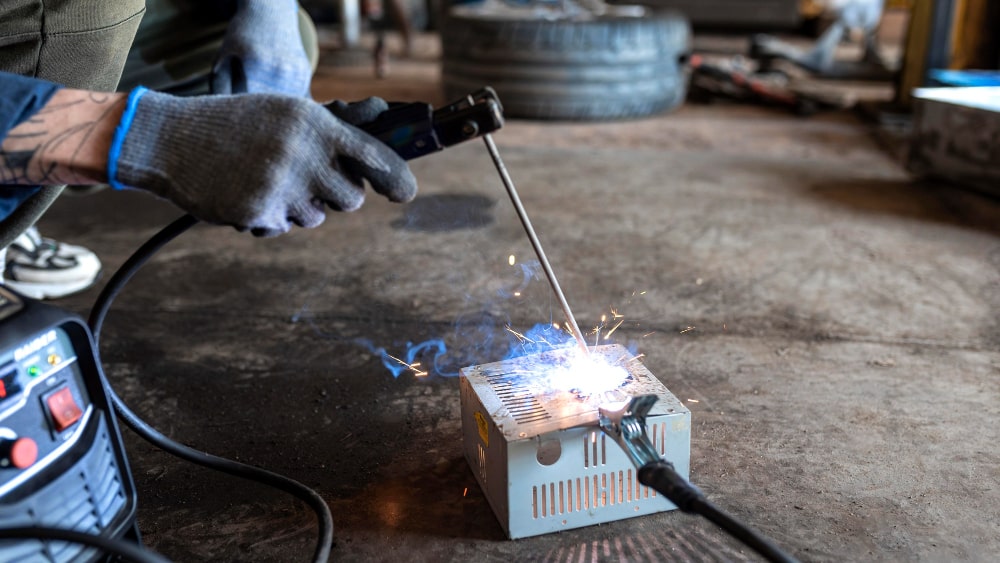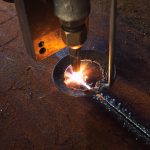Welding is essential in various industries such as construction and vehicle manufacturing, allowing for the joining of materials, usually metals or thermoplastics, through fusion or pressure. Over time, various techniques have been developed to meet specific needs. Below are the different types of welding, their characteristics, and common applications.
Arc Welding
Arc welding is one of the most common types of welding and is widely used in the metalworking industry. This method uses electrical current that creates an arc between the electrode and the metal pieces to be joined, melting the base material and the electrode to form the joint. There are several subtypes within this category:
- Shielded Metal Arc Welding (SMAW): A versatile and simple method where a coated electrode is consumed, forming a slag that protects the weld.
- MIG Welding (GMAW): Uses an inert gas to protect the weld from oxidation, common in the automotive industry and machinery.
- Flux-Cored Arc Welding (FCAW): Similar to MIG, but with an electrode that has a flux core that generates protective gas, ideal for outdoor work.
- TIG Welding (GTAW): Uses a non-consumable tungsten electrode and an inert gas, suitable for precise and high-quality work, such as in the aerospace industry.
Resistance Welding
Resistance welding is a process that uses pressure and heat generated by electrical resistance to pass current through the materials to be joined. This method is commonly used in the automotive industry for body manufacturing and in the production of home appliances. There are several types of resistance welding, including:
- Spot Welding: Used to join thin metal sheets at discrete points. It is very common in automobile manufacturing.
- Seam Welding: Similar to spot welding but joins pieces along a continuous line, ideal for metal containers and pipes.
- Projection Welding: Applied in specific areas where a higher density of energy is required, such as in the manufacturing of nuts and bolts welded to metal surfaces.

Friction Welding
Friction welding is a solid-state process where heat is generated through mechanical friction between the pieces to be joined, combined with a pressure force that causes the union. This type of welding is used in applications where it is important to minimize thermal deformation, such as in the manufacturing of aerospace and railway components.
- Friction Stir Welding (FSW): A variant of friction welding where a cylindrical rotating tool creates the joint. It is ideal for joining difficult-to-weld materials such as aluminum.
Brazing and Soldering
Although technically not welding processes in the strict sense, brazing and soldering are widely used joining methods. Both processes involve joining metals using a filler material, but the main difference lies in the operating temperature.
- Brazing: Performed at temperatures above 450°C, using a filler material that melts and flows between the pieces to be joined. It is common in the manufacturing of heat exchangers and in the refrigeration industry.
- Soldering: Carried out at temperatures below 450°C, using a filler material such as tin or lead. It is widely used in electronics for joining electrical components.
Laser and Electron Beam Welding
These are high-tech methods that use concentrated energy sources to melt the material and create the joint. They are ideal for applications requiring extreme precision and high production speeds.
- Laser Welding: Uses a laser beam to melt the metal, allowing for precise control and minimal distortion. It is used in the manufacturing of electronic components and in the automotive industry.
- Electron Beam Welding: Uses an electron beam to melt the material, creating a deep and narrow weld. It is common in the aerospace industry and in the manufacturing of turbines.
The different types of welding offer specific solutions for various industrial applications. Understanding what welding is and the characteristics of each technique is fundamental for selecting the appropriate method based on the project needs. Each welding type has its advantages and limitations, and the correct choice can make a difference in the quality and durability of the final joint.






